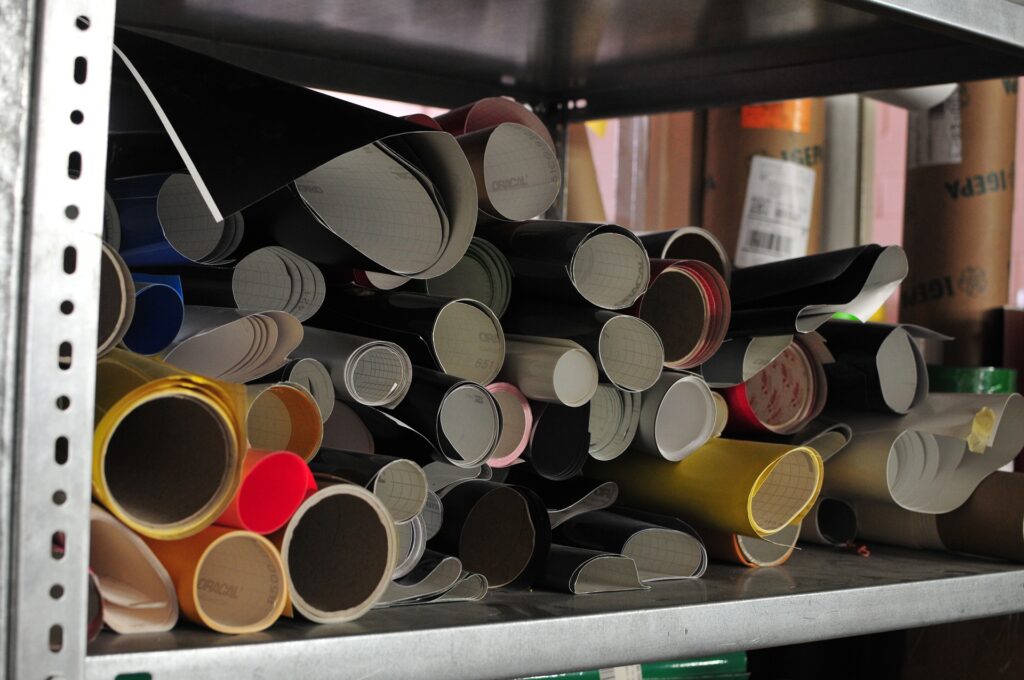In the evolving world of retail, choosing the right type of signage can make a significant difference in how effectively you attract and engage customers. Both digital and traditional signage have their unique advantages and applications. In this blog article, we’ll compare digital and traditional signage to help you determine which option is best suited for your store’s needs.
Understanding Traditional Signage
Traditional signage includes a wide range of physical, static signs such as banners, posters, and window decals. Here’s a closer look at the benefits and considerations associated with traditional signage:
Cost-Effectiveness
- Initial Investment: Traditional signage typically involves a lower initial investment compared to digital signage. Materials like vinyl, paper, and plastic are relatively inexpensive, making them a budget-friendly option for many retailers.
- Durability: High-quality traditional signs are durable and can last for years with proper care, reducing the need for frequent replacements.
Simplicity and Reliability
- No Power Needed: Traditional signs do not require electricity, reducing the risk of technical issues and ensuring consistent performance.
- Ease of Installation: Installation is straightforward and does not require specialized equipment or technical expertise.
Customizable and Versatile
- Design Flexibility: Traditional signage allows for a high degree of design customization, including various materials, finishes, and sizes to suit your specific needs.
- Wide Range of Applications: From storefront signs to in-store displays, traditional signage can be used in a variety of retail settings.
Exploring Digital Signage
Digital signage encompasses electronic displays such as LED screens, digital billboards, and interactive kiosks. Here’s why digital signage might be the right choice for your store:
Dynamic Content
- Versatile Messaging: Digital signage allows for real-time updates and the display of dynamic content, including videos, animations, and changing messages. This flexibility can be particularly effective for promoting sales, events, or new products.
- Interactive Features: Advanced digital signage can incorporate interactive elements such as touchscreens and QR codes, enhancing customer engagement and providing additional information.
Enhanced Visibility and Impact
- High-Resolution Displays: Digital signage offers high-resolution graphics and vibrant colors that capture attention and create a modern, sophisticated look.
- Attractiveness: Moving visuals and eye-catching animations can draw customers into your store and keep them engaged longer.
Analytics and Insights
- Data Collection: Digital signage systems often include analytics features that track customer interactions, providing valuable insights into customer behavior and the effectiveness of your marketing efforts.
- Targeted Messaging: Use data-driven insights to tailor messages based on demographics, time of day, or other factors to improve relevance and impact.
Comparing Costs and ROI
Initial and Ongoing Costs
- Traditional Signage: Generally has a lower upfront cost but may require additional expenses for printing and materials. Maintenance costs are minimal, but the signs must be replaced if updated content is needed.
- Digital Signage: Involves a higher initial investment due to the cost of electronic displays and installation. However, it offers long-term savings by reducing the need for frequent print updates and allowing for multiple messages on a single display.
Return on Investment
- Traditional Signage: Offers a good return on investment for straightforward, long-term advertising with minimal changes. Effective for businesses with stable messaging and a focus on cost-efficiency.
- Digital Signage: Provides a higher return on investment for businesses that benefit from frequently changing content and interactive features. The ability to update messages in real-time and gather customer data can lead to increased engagement and sales.
Making the Right Choice for Your Store
Deciding between digital and traditional signage depends on your store’s specific needs and goals:
- Budget Considerations: Evaluate your budget for both initial investment and ongoing costs. Traditional signage may be better for tighter budgets, while digital signage offers advanced features for a higher investment.
- Content Needs: Consider how often you need to update your content. Digital signage is ideal for frequent changes and dynamic content, whereas traditional signage is suited for more static displays.
- Customer Experience: Think about the customer experience you want to create. Digital signage can offer interactive and engaging experiences, while traditional signage provides a classic, reliable approach.
Partner with RetailGraphics – The Retail Signage Company
When choosing the best signage solution for your store, consider partnering with RetailGraphics – The Retail Signage Company. Our team of experts can help you navigate the decision between digital and traditional signage, ensuring you select the best option to meet your retail goals.
Contact RetailGraphics today to discuss your signage needs and discover how we can enhance your store’s visibility and customer engagement.

